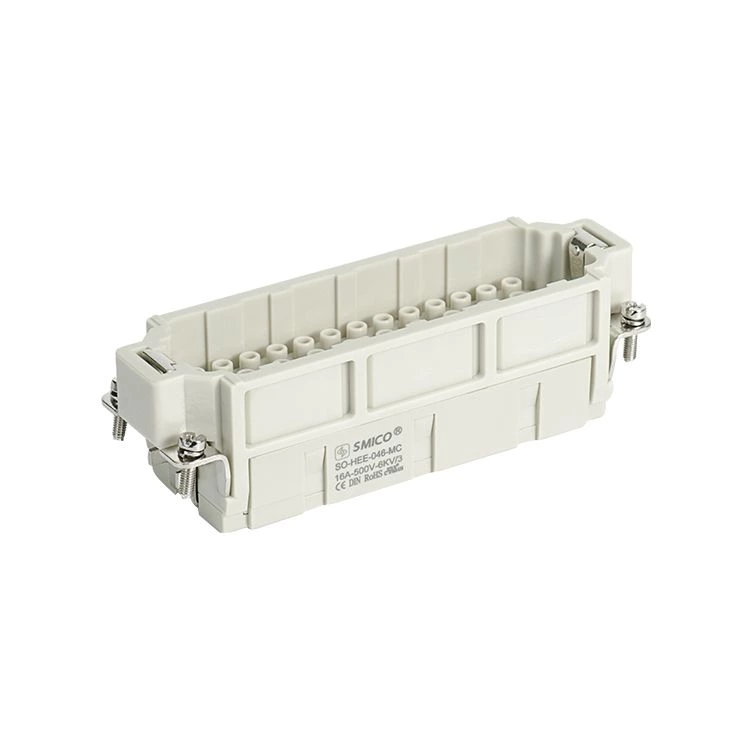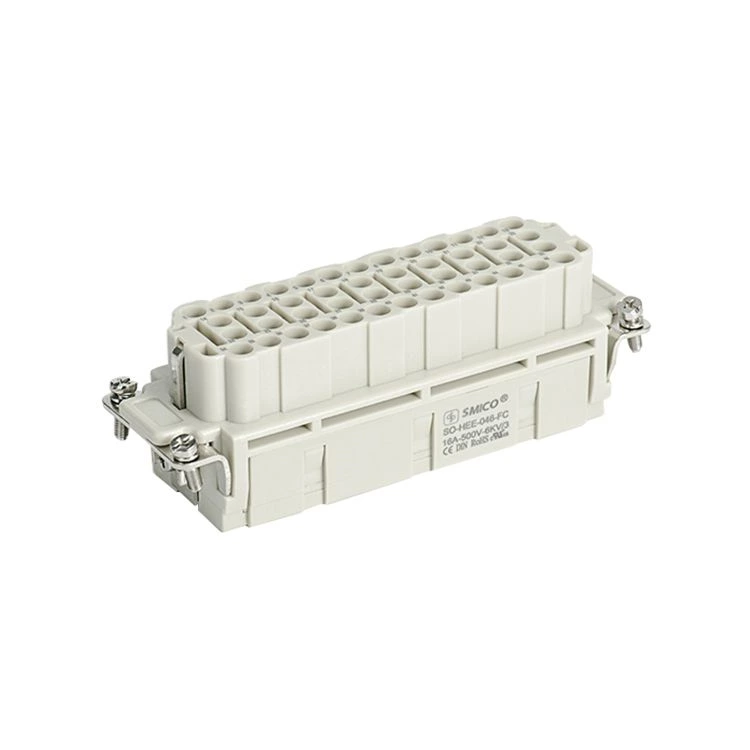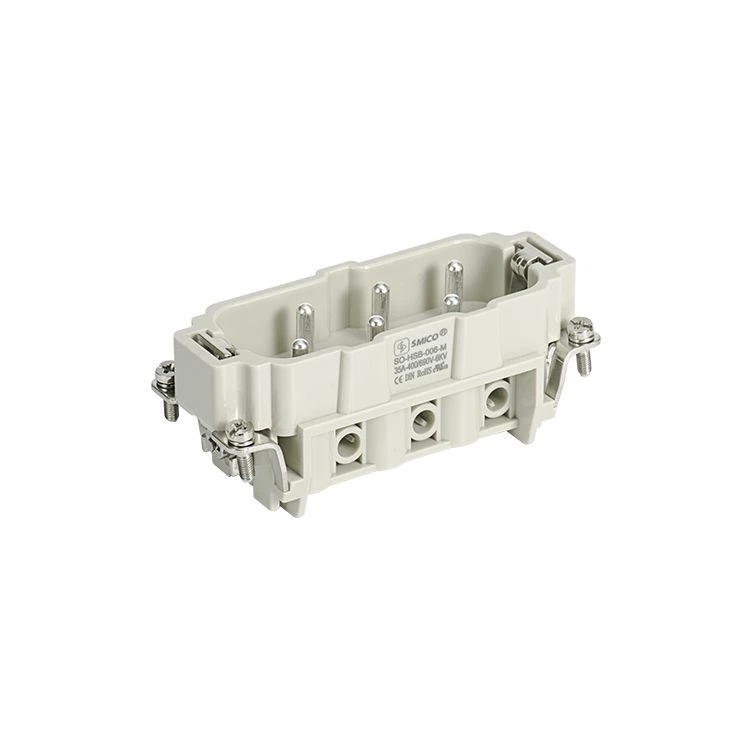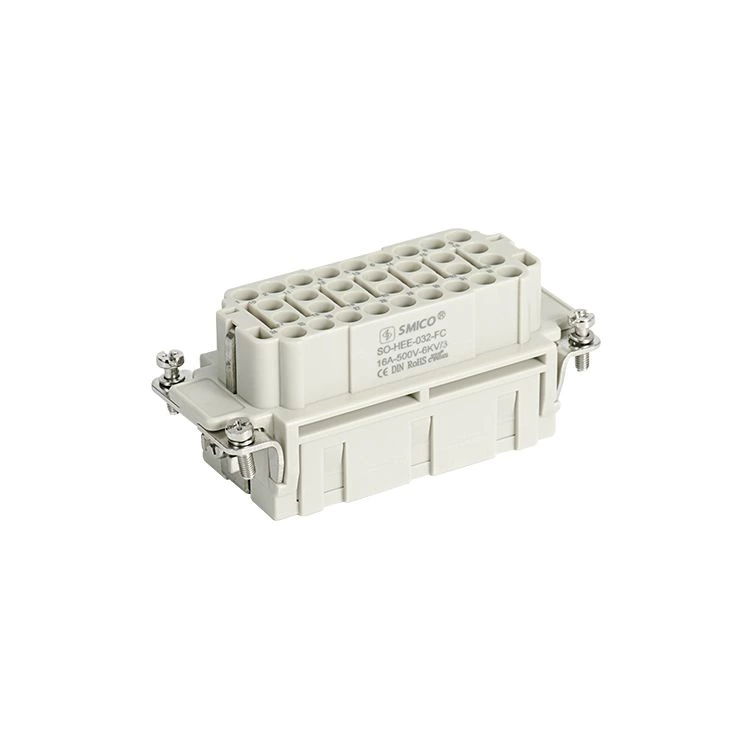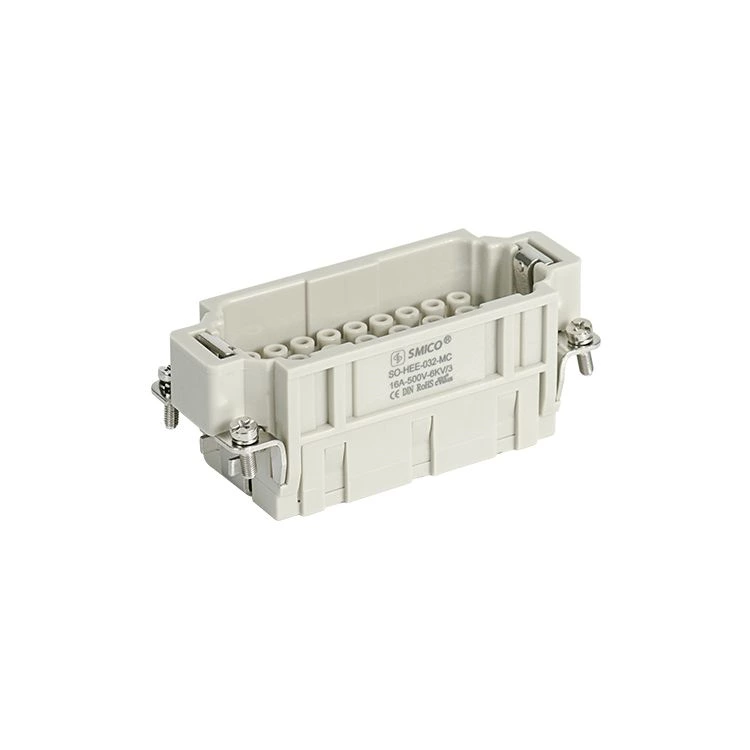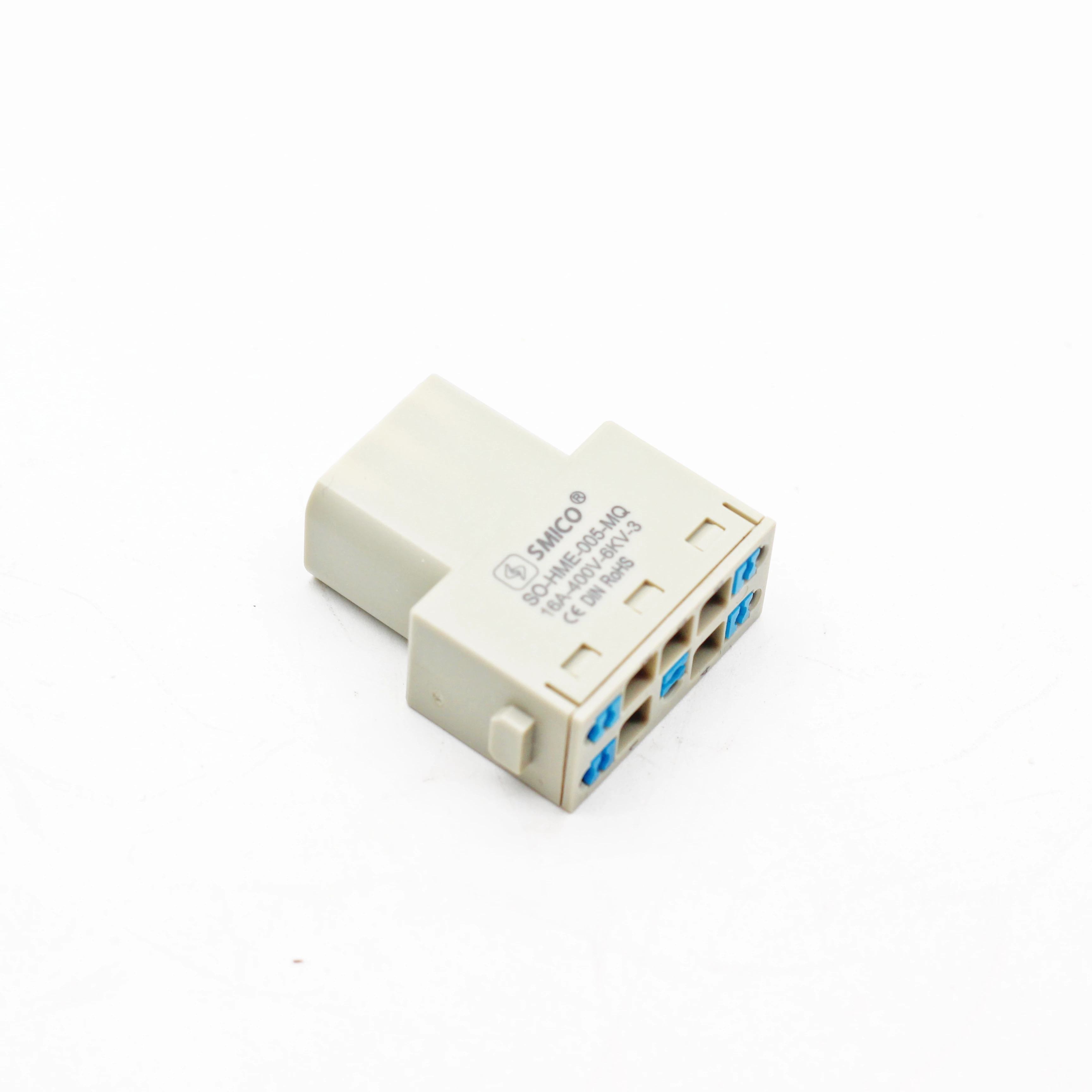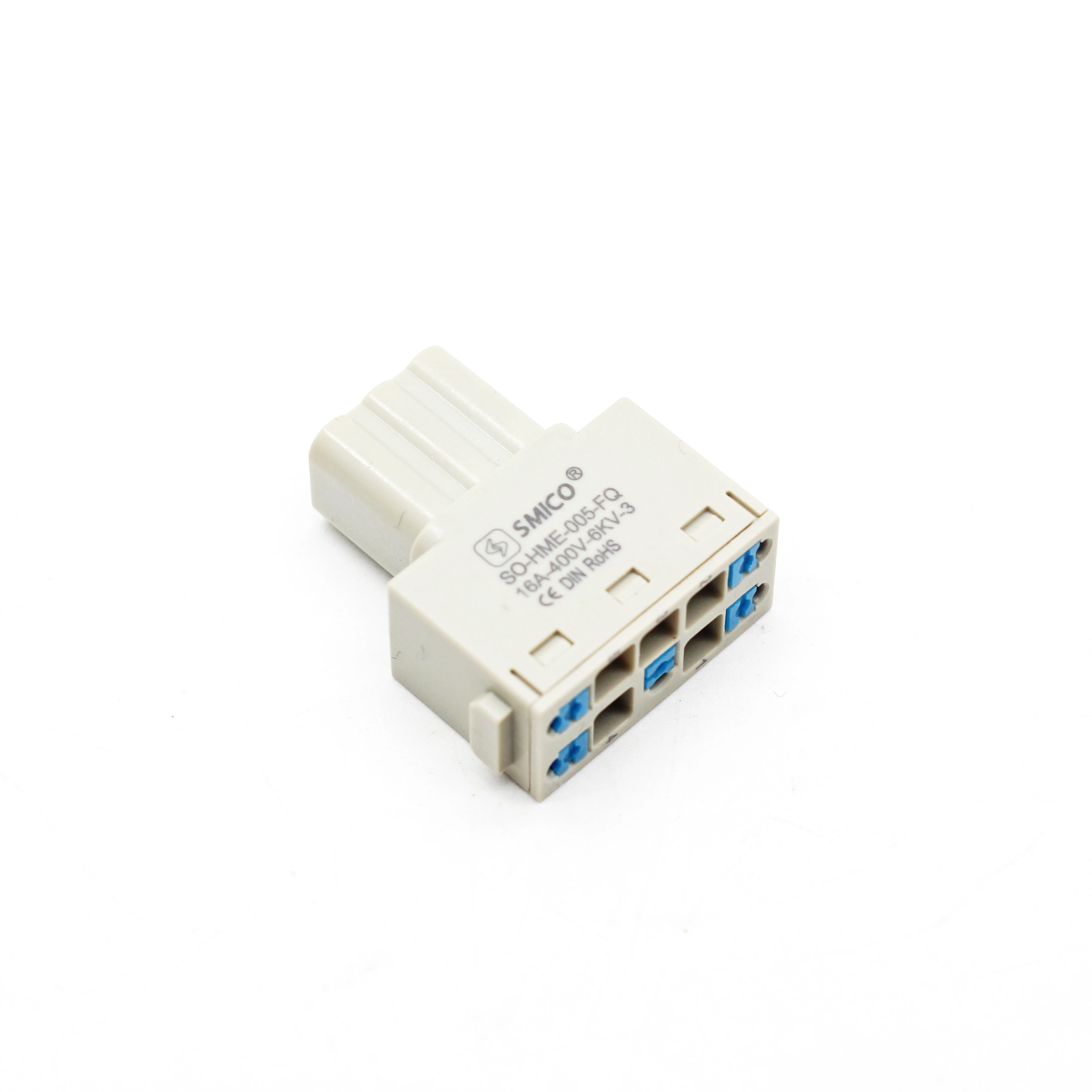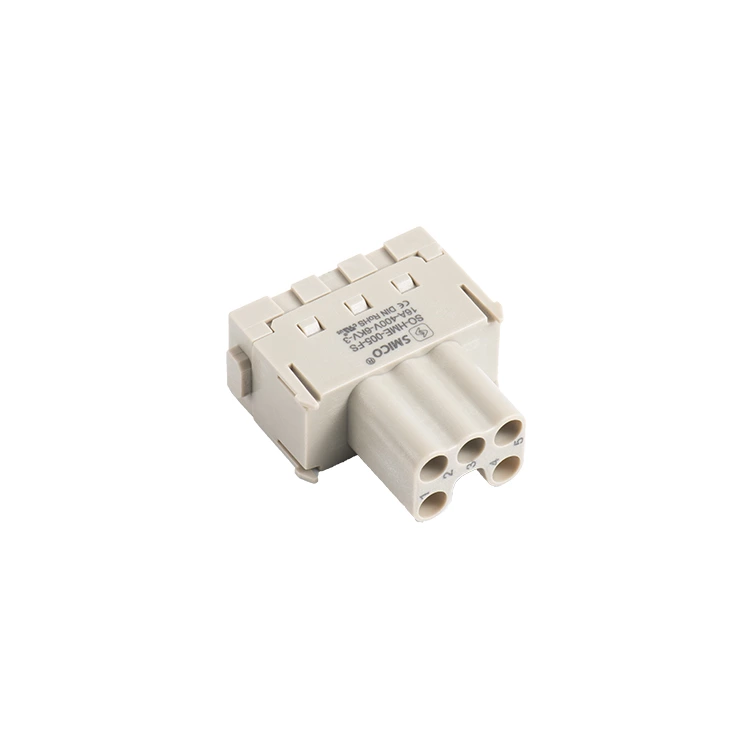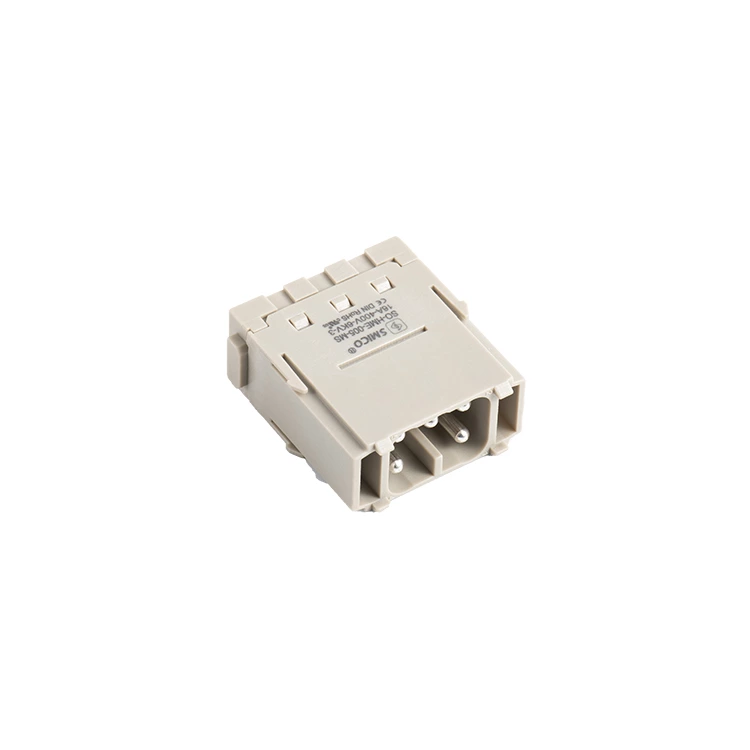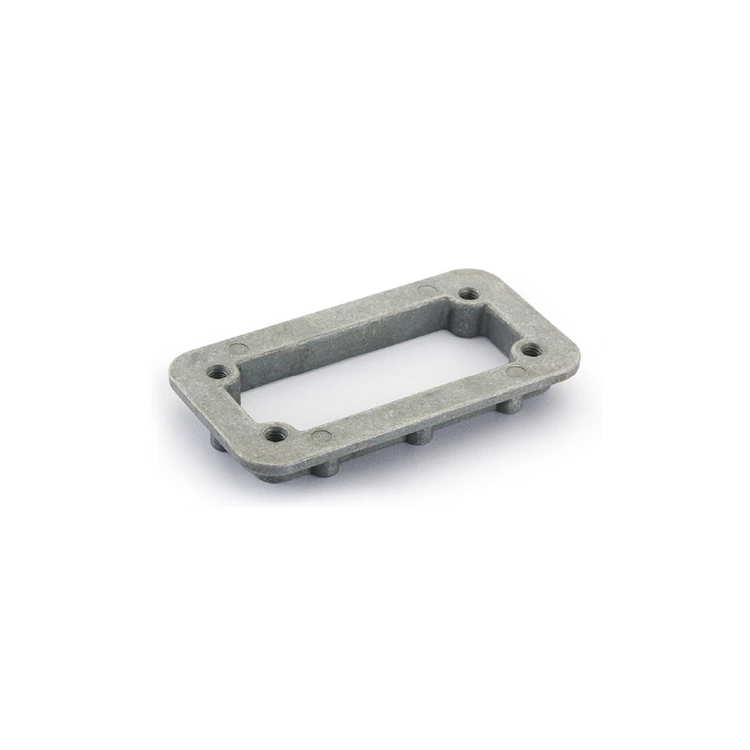Common Faults And Solutions For Heavy-duty Connectors (cold-pressed Type)
Heavy Duty Connector Common faults: 1. Pin withdrawal during mating
Solutions:
1. Poor pin guidance due to component defects. Generally, there will be traces of male pin extrusion left at the mating end of the female pin
2. Poor crimping leads to incomplete assembly. At the crimping point, the crimping deformation is too large or bent, resulting in interference with the corresponding mounting hole, and it cannot be assembled in place
3. Other reasons lead to incomplete assembly. Due to reasons such as too thin wires or too small holes, the assembly is not in place, etc.
4. Component defects lead to unreliable support. Due to component defects, such as the support platform of the plug body, or the spring defects on the pin, the support is unreliable
Common faults of cold-pressed heavy-duty connectors: 2. Poor contact
1. The effective contact distance, mating surface, and the height of each pin should be basically the same. By checking the distance from the obvious increase in the mating force to the mating position when the connector is mated,
Generally more than 2mm; at the same time, check whether the height of each pin on the mating surface is basically the same, to exclude the lack of effective contact distance of individual pins due to the defects of individual pins.
2. Whether the female pin has a clamping force. Eliminate it by testing the clamping force one by one.
Pin withdrawal. Eliminate it by checking whether the height of each pin on the mating surface is still basically the same after the connector is plugged in.
Heavy-duty connector, industrial connector
If the pin height is obviously inconsistent after plugging in, check whether it is caused by poor assembly, component defects, or poor pin guidance.
If it is caused by poor guidance, after plugging in, the male pin will leave a mark of extrusion on the end face of the female pin.
